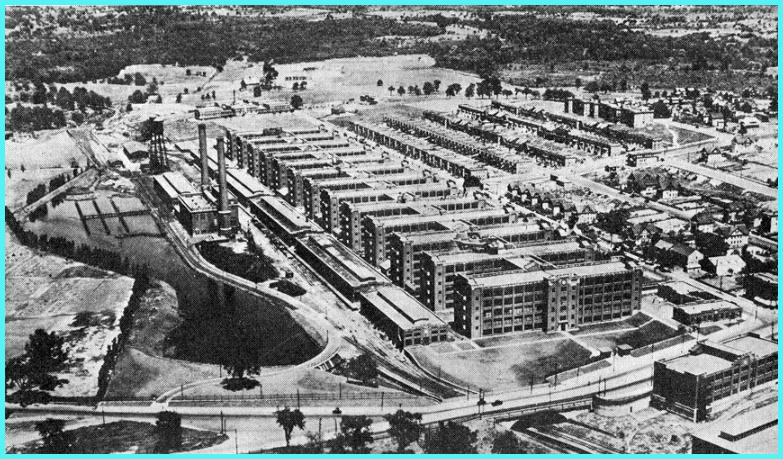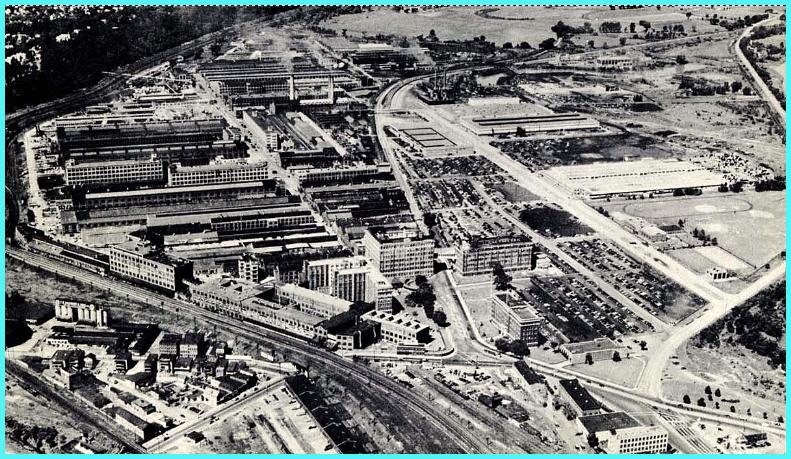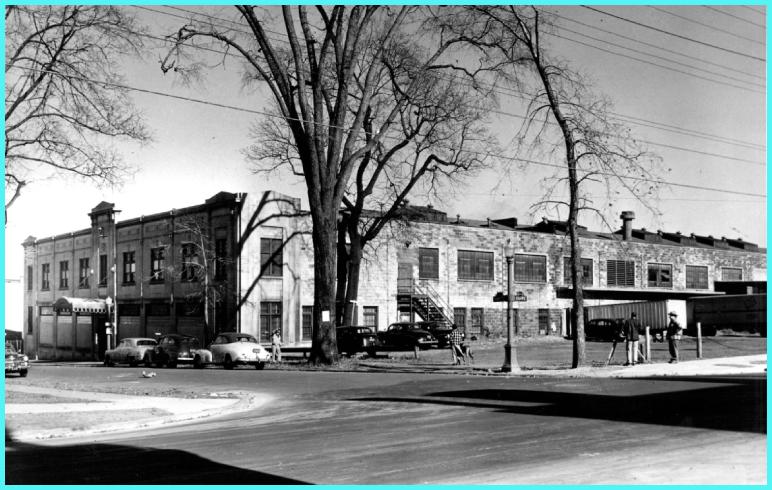
Early Northeastern Plants and Facilities
Prior to the 1938-39 introduction of mobile FM equipment, the AM gear supplied by GE was developed and manufactured in the Schenectady plant. The original first, second, and third M.O. (M.O. - Manufacturing Order) low-band FM mobile equipment was designed by G.E. Engineers at Schenectady and manufactured by James M. Millen of Malden, Massachusetts. Information on the linked site indicates that the Millen company was started in 1938.

G.E.'s Bridgeport works shown above produced the 4th M.O. low-band FM equipment starting in 1941 .

In the spring of 1942 the Emergency Communication Equipment Section, as the mobile communications business was then called, was moved from Bridgeport back to the Schenectady Works, shown above, and it remained there for 3 years. There's more about the start of this move in the box on the second page of this GE News.

Toward the
end of the war (in January, 1945) mobile operations
were moved from Schenectady to GE's Thompson Road
Plant
(not shown) in Syracuse, NY, and manufacturing was resumed
with the
sixth M.O. low-band equipment. In June, 1947 the mobile radio offices
moved from Thompson Road to Building 7 (shown above) in GE's
nearby and new Electronics Park, but
production continued at
Thompson Road? In
the photo: the labs were in the section under the dish antenna and the
offices were in the smaller section at the rear. Unseen behind
the
lab section was a huge manufacturing area.
From a November 1953 magazine: The Commercial Equipment Department, has been established in General Electric's Electronics Division to concentrate the company's efforts in TV station equipment, 2-way radio and microwave communication, and germanium products. William Morlock was appointed general manager: Lacy W. Goostree, Jr., manager of marketing: Charles M. Heiden, manager of engineering; and Clair Lasher, manager of manufacturing.
From a September 1954 magazine: James D. Helm, sales manager of special accounts at G.E., Syracuse, N.Y., has also been named sales manager for mobile communications equipment.
In 1957 the marketing operations were moved to a
small leased facility (formerly a plumbing shop) nearby Liverpool, NY
where they remained until
the move to Lynchburg in 1959.

The photo above is likely the interior of one of the
Electronics
Park facilities - Building
7? The close spacing of the windows in the
background rules out Bridgeport or Kent Street.
The
location of mobile assembly operations between 1945 and 1950 is
unclear. Thompson
Road and/or Building 7 in Electronics Park are both
possible
locations before the 1951 move to Kent Street in Utica, NY.

According to this article GE owned a vacant plant on
Kent
Street in Utica, NY where vacuum tubes had been manufactured
until 1948.
During the first half of 1951 many
mobile radio manufacturing operations were moved to this plant
(shown
above) where they remained until the move to
Lynchburg, VA in 1959.
In addition to this plant GE also leased space
in nearby New York Mills for Special Mfg., coil fabrication, Order
Service, Product Service and Service Parts.
Additionally, Quartz
crystal fabrication was done at yet another GE leased facility in
Clyde,
NY.
So
by the mid-to-late-1950s GE's rapidly-growing communications operations were strung out over 100 miles in several N. Y. locations. - 5 N.Y. facilities. Management was eager to get everything consolidated under one roof and the quest for new facilities was started. The first attempt at consolidated facilities was a plan announced in 1956 to build a new plant at Gainsville, FL.
However, by the middle of that year the plan had been canceled, and nothing further developed until the mid-1958 announcement of the move to Lynchburg, VA.
Some GE Computer dept. history states that Colorado Springs was high on the list of preferred sites for the Computer Department but there was a turf battle waged over it as Harrison Van Aken, the General Manager of the Communications Equipment Department, stated that he had "dibbs on it" for his Communications Department and would block Computer from going there. He was ultimately forced into moving into some excess capacity then available in Virginia. When Van Aken later became General Manager of the Computer Department it was in Phoenix -- not Colorado Springs!.
Continued on the Southern Plants and Facilities page

